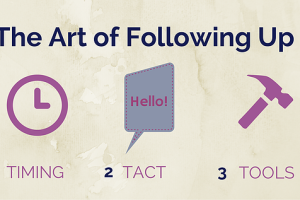To refresh our knowledge of physics, let us recap the definition of inertia — it is the force that keeps an object moving or stationary until it is moved or stopped by another force. So, imagine a ball standing in one place. This ball will continue to be still until an outside force causes it to move, for example a child comes and kicks the ball.
In sales, inertia is that force that keeps your prospects running their business in exactly the same way, employing exactly the same methods – using the same software when available options evolve regularly. You can recognize prospects’ inertia by the following sentences: “That’s not a priority for us at the moment,” “We are doing okay with our current methods”, “We don’t have money for that right now.” In other words, as long as their business is going not too good, not too bad, your prospect will probably not feel it a necessity to change anything about the way they run their business.
But why is this so… especially if you are offering a product which is head and shoulders above its competition? Anyone who knows anything about business must be aware of the importance of being proactive and innovative in his or her field. Read any business blog and surely you will come across this topic. Innovation is the buzz words of all the seminars your company sends you to. So, why something so ubiquitous in theory is so scarce in practice?
And just to show you how scarce, here are some statistics:
- In the US new products fail at a 40-90% rate, depending on the industry.
- Out of 30,000 products that are launched in the US packaged goods industry, 85% are recalled within the first 2 years.
- About half the companies that pioneered new product categories later withdrew from those businesses.
Let us remember Segway for a moment– in spite of its full support from Steve Jobs, Jeff Bezos (Amazon), and many other high-key investors, in the first 18 months from being launched, only 6,000 scooters were sold as opposed to the expected 50,000 to 100,000 units. Even the big names such as Coca Cola or Google have had their share of failures.
Now, prospects’ reluctance to buy is one thing; however, the company’s inability to predict the outcome of their lauded products is something else. How do companies manage to misjudge their new, revolutionary products so often?
For a long time, companies have believed that all it takes is a new, superior product that offers more value than existing ones for the prospects to readily embrace them. However, when predicting product success, companies, often too confident in their products, tend to overlook the psychological factors that govern prospects’ behavior.
In reality, prospects are not too fond of changing their behavior and would rather avoid it. Their behavior is affected by several psychological biases, the endowment affect and status quo bias being the most prominent in the case of sales inertia. The endowment effect has the prospect irrationally value the products that they currently possess more than the ones they do not. This means that people would rather avoid losing something they own than gaining something new.
On the other hand, status quo bias is an emotional preference for the current state of affairs. The current situation (the status quo) is perceived as a reference point, and any deviation from it is considered a loss. Moving to a new, bigger house with a seaside view sounds nice, but not if it means that the current park view would be missing.
To quote Albert J. Weatherhead Jr., Professor of Business Administration at Harvard Business School, “The losses consumers will incur in switching to electric cars, obtaining power from wind turbines, and scrolling through e-books will have a far greater psychological impact than will the gains from using them.”
How can this be changed?
There are a few things that sale reps can do when pitching new products/services:
- Incomparable improvement. Stress the benefits of the new product, so that they overweight any losses the prospect might be anticipating.
- Leave no other options. If you are offering a new, updated version of your product, recall the old version. Eliminate the risk of sales inertia by leaving your prospects with no choice. You will still be your prospects’ first choice simply because turning to a similar product by another company will most likely require an even greater behavior change, which your prospects would rather avoid.
- Minimize behavior change. Evidence shows that most successful products are those that offer significant benefits but demand as little change as possible. (This is how Google search engine became so popular.) Therefore, when pitching, sales reps should stress that their product requires minimum departure from the status quo.
- Find new users. If your existing market is not willing to change, find a new one. A great example is the company Burton Snowboards, one of the main manufacturers of snowboard equipment in the US and the world. Through their marketing efforts, they targeted young winter sport enthusiasts that had not yet expressed a preference for skiing over snowboarding. Their campaign had notable results indeed – today the number of snowboarders in the US exceeds the number of skiers.
- Point out the losses. The best way to move a lead out of inertia is if you stress the losses their business is experiencing by sticking to old methods. Mention the results of their competitors who have already switched to the new product. Nothing gets people to move as knowing that someone else is reaping the benefits instead of them.
- Finally, be patient. The past has taught us that it takes time for any new, revolutionary product to gain traction. Such was the case with the cellular phone and satellite radio, both of which we take for granted now and could not imagine living without. So, when pitching that ‘new product that promises to change X as we know it’, sales reps should arm themselves with patience and a big smile, remembering that any great change takes time and will encounter initial resistance.









Speak Your Mind